Do All Golf Courses Have The Same Par
Do all golf courses have the same par? No, they don’t. Most full-size golf courses with 18 holes have a par of 72, but some have par 70, 71, or even 73. The word par means the number of strokes a good golfer is expected to take to finish the course.
A golf course’s par depends on the number and length of its holes, like par-3s, par-4s, and par-5s.
Some courses, like executive courses or 9-hole courses, have a smaller total par. So even though par 72 is very common, not all golf courses have the same par.
People often think every 18-hole golf course is a par 72, but that’s not true at all. I’ve played courses with par 70, par 71, even par 74 setups. I’ve even seen par-6 holes on extra-long layouts. The truth is, each golf course is designed differently.
The course architect looks at the land, the terrain, and the distances to decide how many par-3s, par-4s, and par-5s to include.
In this article, we’ll explain why not all golf courses have the same par. You’ll learn what par means in golf, how it’s decided, and why some courses are par 70, par 72, or even higher.
We’ll compare 9-hole and 18-hole courses, explore rare holes like par-6, and give real examples like Augusta National.
By the end, you’ll understand how course layout, hole length, and design choices affect the total par.
How Does Par Vary Between Real Golf Courses (Par Breakdown Table)
| Golf Course Name | Total Holes | Total Par | Par-3 Holes | Par-4 Holes | Par-5 Holes |
| Augusta National (USA) | 18 | 72 | 4 | 10 | 4 |
| Pebble Beach (USA) | 18 | 72 | 4 | 10 | 4 |
| TPC Sawgrass (USA) | 18 | 72 | 4 | 10 | 4 |
| St. Andrews Old Course (UK) | 18 | 72 | 2 | 12 | 4 |
| Harbour Town (USA) | 18 | 71 | 4 | 11 | 3 |
| Torrey Pines (South) | 18 | 72 | 4 | 10 | 4 |
| Chambers Bay (USA) | 18 | 71 | 3 | 11 | 4 |
| Oakmont Country Club (USA) | 18 | 70 | 4 | 12 | 2 |
| Local Executive Course | 9 | 30 | 5 | 4 | 0 |
Note: This table shows that even among famous courses, par totals are not always the same. Most standard 18-hole golf courses are par 72, but you can see examples of par 70 and par 71 courses as well.
What Does “Par” Mean on a Golf Course: A Simple Way to Understand It
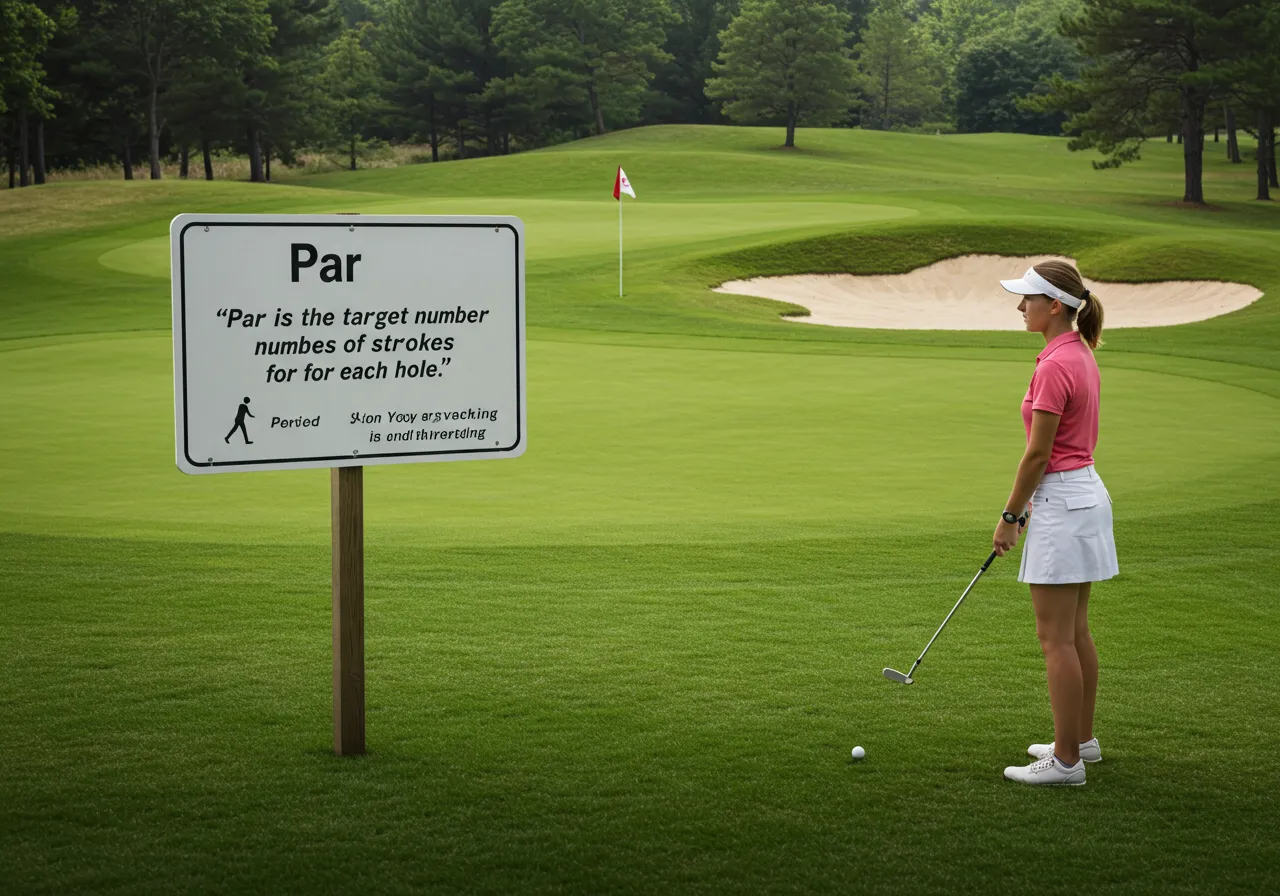
Par means the number of strokes a golfer is expected to take to finish the course. On most regulation golf courses, par adds up to around 70 to 72 strokes. That usually includes:
- 4 par-3 holes (short holes)
- 10 par-4 holes (medium)
- 4 par-5 holes (long)
But this isn’t a rule, it’s just common. On tougher or shorter courses, the par can be very different.
Why Do Some Golf Courses Have Different Par Scores
Courses change par based on:
- How long the holes are
- How many short vs long holes are there
- If it’s a full 18-hole course or a 9-hole or an executive course
- Whether it’s built for casual play or PGA Tour events
For example, Augusta National Golf Club, home of the Masters, is a par 72, but not every pro course is. I’ve played PGA Tour events on par 70 and par 71 courses too.
What’s the Takeaway for New Golfers
Don’t worry too much about whether a course is par 70, 72, or 74. Just know that the par changes depending on the course. Focus on how you play against that number; that’s how you improve.
And next time someone says, “Isn’t every course par 72?”, now you can smile and say:
“Actually, not even close.”
What Is Par in Golf and How Is It Decided on Every Hole
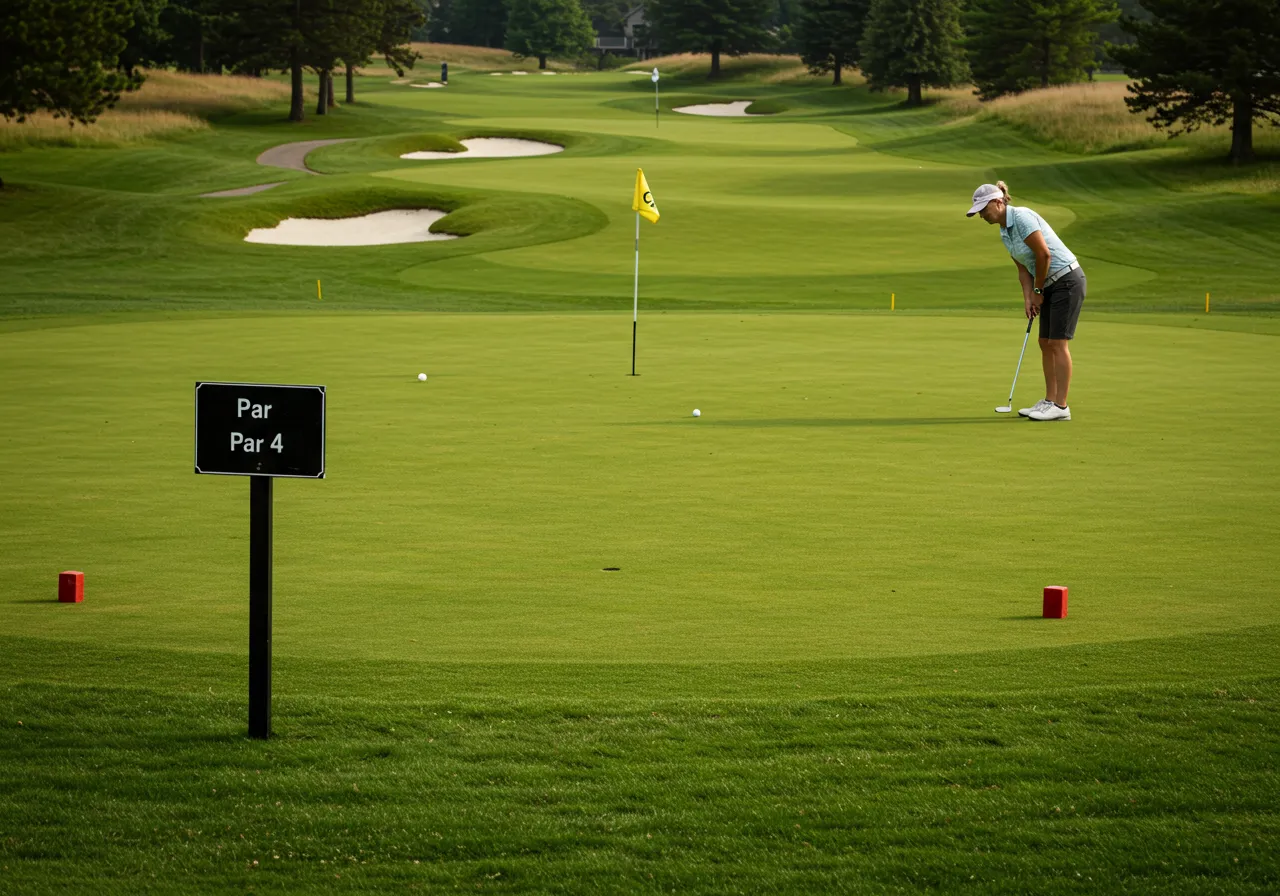
Par Definition in Golf: What Does Par 72 Mean on a Golf Course
As a golf pro who plays year-round, I’ve seen a lot of golfers think par is just a number on the scorecard.
But it’s more than that. In golf, par is the number of strokes a skilled golfer is expected to take to complete a hole or an entire course.
When a golf course says it’s par 72, that means the full 18 holes should take 72 strokes total for an expert.
Each hole has its own par rating, usually par-3, par-4, or par-5, depending on how long and challenging it is.
If you shoot better than par, that’s a birdie or eagle. If you go over, it’s a bogey. These scoring terms are part of the stroke play system that most courses use.
How Is Par Decided on a Golf Course? A Simple Breakdown From a Golf Pro
Most golfers don’t realize that par is based on more than just length. According to USGA guidelines, par is decided by distance, but also by course design:
- Par-3 holes: 250 yards or less
- Par-4 holes: 251 to 470 yards
- Par-5 holes: 471 to 690 yards
But there’s more to it. Golf course architects also look at the land. If a hole has a sharp dogleg, uphill climb, or water hazard, it might play harder and be rated differently, even if the yardage fits. Designers like Jeffrey Brauer use this mix of science and creativity to set each hole’s par.
That’s why a course layout directly affects par, from hazard placement to how the course flows.
Why Par Isn’t Always the Same (And Why That’s Okay)
No two golf courses are exactly alike. A course in the mountains may have fewer long holes, while a course by the ocean may deal with wind.
Even if both are par 72, they feel very different to play.
Understanding what par means and how it’s calculated helps you become a smarter golfer, if you’re just starting or already breaking 80.
Why Don’t All Golf Courses Have a Par 72
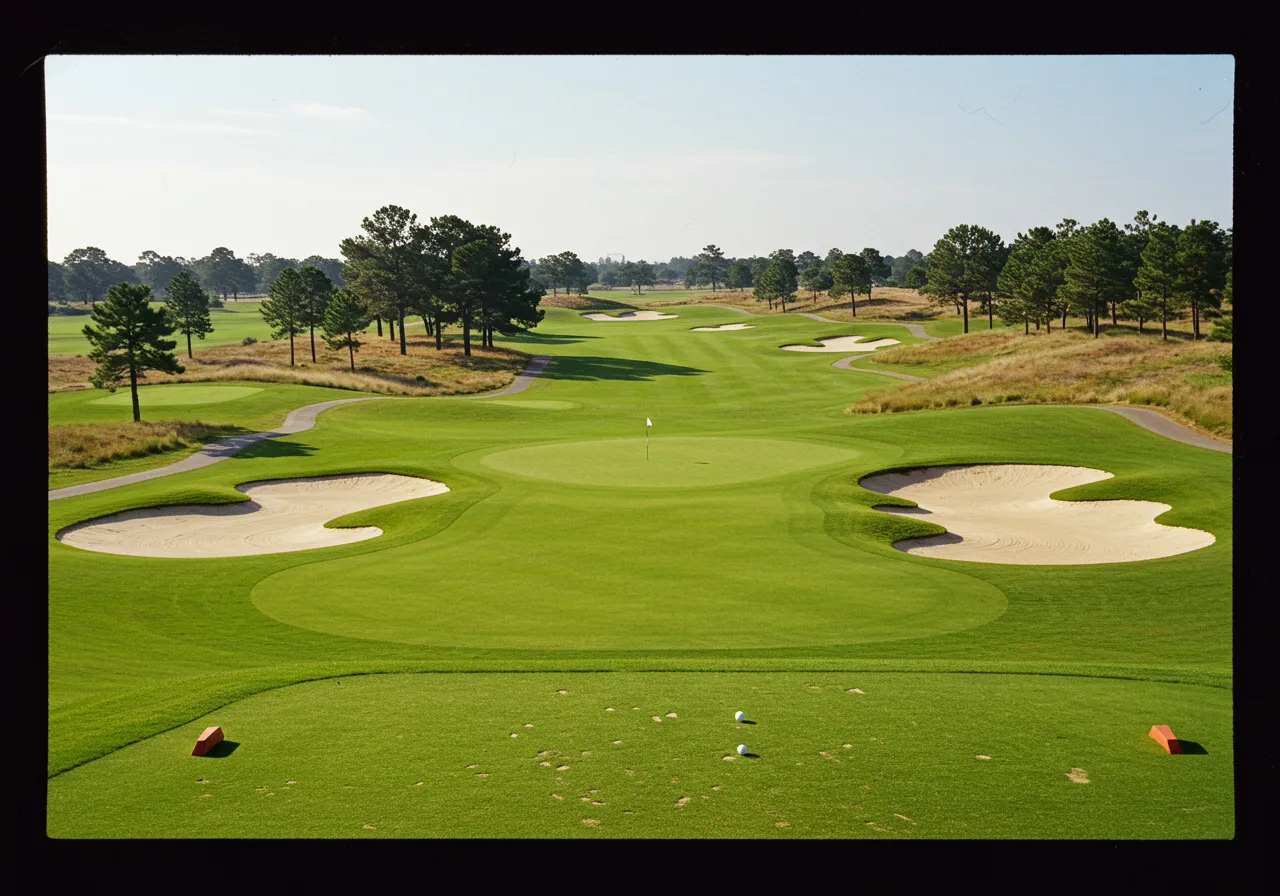
Are All Golf Courses Par 72? Here’s Why That’s a Common Misunderstanding
A lot of people think that every golf course is par 72—but that’s just not true. In fact, only about 30% of all golf courses are actually par 72, according to data from the National Golf Foundation (NGF). The rest range from par 70 to par 74, and sometimes even lower.
Let me give you a few real examples:
- Augusta National, where the Masters Tournament is played, is a par 72.
- Pebble Beach, another famous course, is also par 72.
- But Pinehurst No. 2, one of the toughest U.S. Open venues? That one is a par 70.
So even the best-known golf courses don’t all have the same par. It depends on how the course was designed
What Factors Decide the Total Par of a Golf Course
As someone who’s played in different states, countries, and climates, I’ve seen firsthand how four key things affect a course’s total par:
| Factor | How It Changes Par | Example |
| Terrain | Courses in hills or mountains often play shorter | Bethpage Black: Par 70 |
| Land Size | Small or city courses can’t fit long holes | Executive Courses: Par 60–68 |
| Design Philosophy | Pro-level courses vs. beginner-friendly resort courses | TPC Sawgrass: Par 72, tough layout |
| Hole Configuration | More par-3s and fewer par-5s lowers the total par | Courses with 12 par-4s = lower par total |
A course designer decides how many par-3s, par-4s, and par-5s to include, based on the land and who the course is built for. A championship course will challenge pros.
A resort course might keep things fun and relaxing.
Why Knowing the Par Matters Before You Play
If you’re a beginner or even a weekend golfer, knowing the total par helps you understand how hard a course might be.
A par 70 course usually means more short holes, while a par 72 course might have longer, tougher holes.
So, not all golf courses are par 72. And now, you know why.
Do All Golf Courses Have 18 Holes or Can They Be Shorter? A Golfer’s Real Take

Are There Golf Courses With Less Than 18 Holes? What Beginners Should Know
If you’re new to the game, you might think every course must have 18 holes, but that’s not always true.
I’ve played on all kinds of layouts, and trust me: not every golf course has 18 holes. Some have just 9 holes, and a few even have 6 or 12.
These shorter golf courses are great for beginners, kids, or anyone who wants a quick round.
They’re usually found in small towns or built in areas where there’s not enough land for a full course. We call them executive courses or par-3 courses, and they’re usually easier and faster to play.
What Is a Regulation Golf Course and How Is It Different From a Short Course
A regulation golf course is what most pros and tournaments use. It has 18 holes, a total par of around 70–72, and a mix of par-3, par-4, and par-5 holes.
It’s the standard format used in the PGA Tour, LPGA, and amateur championships.
But shorter courses are just as fun. A 9-hole course will usually have a total par around 35–36, depending on the design.
Some people play 9 holes twice to make it a full 18—many public courses allow that.
Why Short Courses Matter for Learning and Fun
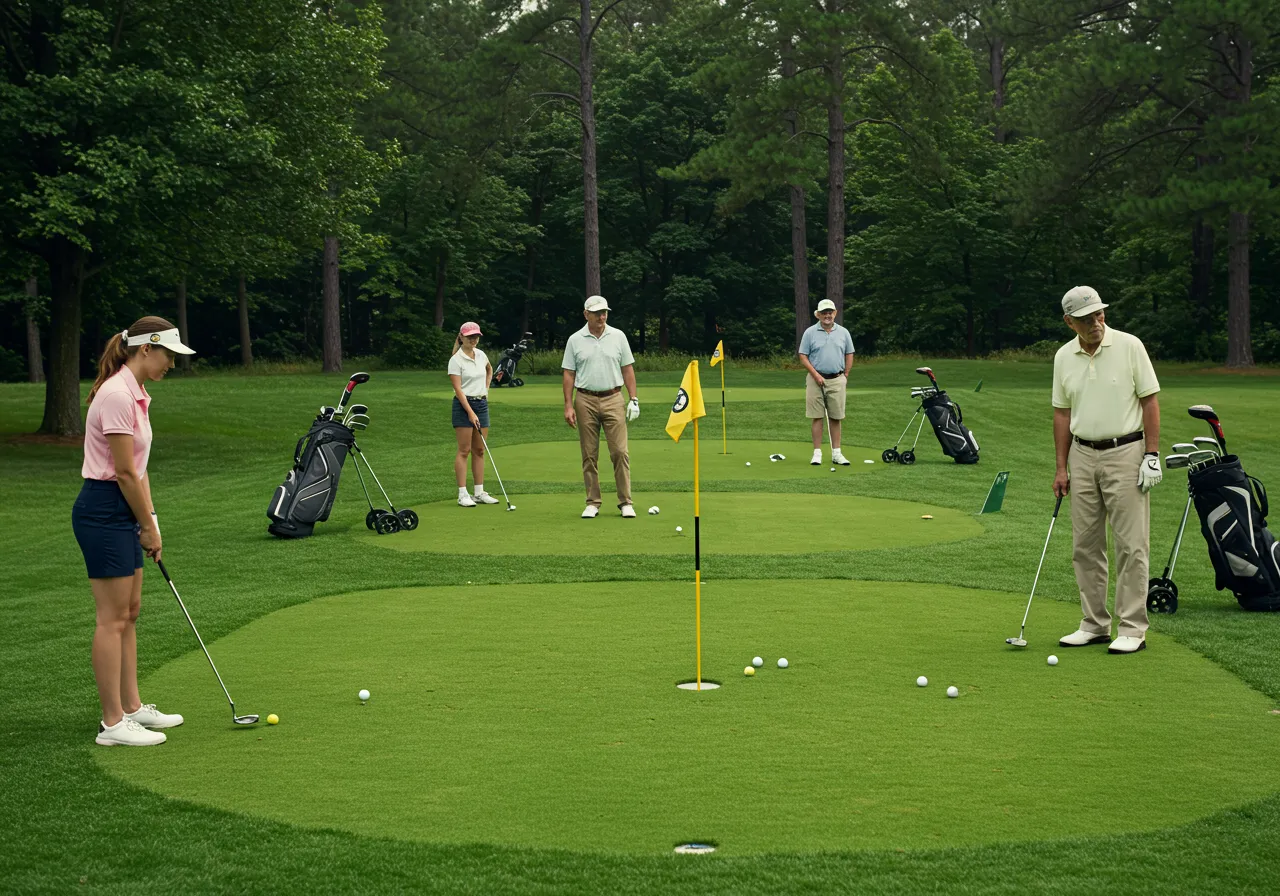
From my experience, some of the best practice happens on smaller courses. They help new players focus on swing control, course strategy, and pace of play without feeling overwhelmed.
And for busy days, a 9-hole course gives you your golf fix without taking 4–5 hours.
So no, not all golf courses have 18 holes, and that’s perfectly okay. The key is playing what fits your time, skill level, and fun factor.
How Many Holes Do Golf Courses Have? Course Types and Par Comparison
| Course Type | Number of Holes | Typical Par | Who It’s Best For | Example Course |
| Regulation Course | 18 | 70–72 | Skilled players, tournaments | Augusta National (USA) |
| 9-Hole Course | 9 | 34–36 | Beginners, casual players | Harding Park 9-Hole (USA) |
| Executive Course | 9 or 18 | 60–68 | Shorter games, seniors, quick play | Crystal Springs Executive (USA) |
| Par-3 Course | 9 or 18 | 54 or less | Practice, juniors, pitch & putt | Augusta National Par-3 Course |
| Short Course | 6, 12, or custom | Varies | Fun, experimental layouts | The Cradle at Pinehurst (USA) |
Note: Not all golf courses have 18 holes, and that’s by design. While regulation courses are used in professional play, shorter formats like 9-hole and executive courses help beginners learn the game, allow for quicker rounds, and fit into tighter spaces. These variations are a normal part of the golf world.
What Does Breaking 80 in Golf Mean and Why It Depends on Par
Does Shooting 75 Always Mean You Broke 80? Understanding Par Differences
As a golf pro, I’ve seen many golfers celebrate shooting 75. But here’s the thing—not all 75s are the same.
If you shoot 75 on a par 70 course, you’re +5 over par. If you shoot 75 on a par 72, you’re just +3 over. Same score, different result.
This is why knowing the total par of the course matters. It affects how your score is judged in stroke play and how it fits into your golf handicap.
When golfers say they’re “breaking 80,” they usually mean staying under par 80, but par isn’t always 72.
To improve your game and set better goals, always check what par you’re playing against.
What Is a Good Golf Course Par for Beginners to Start With
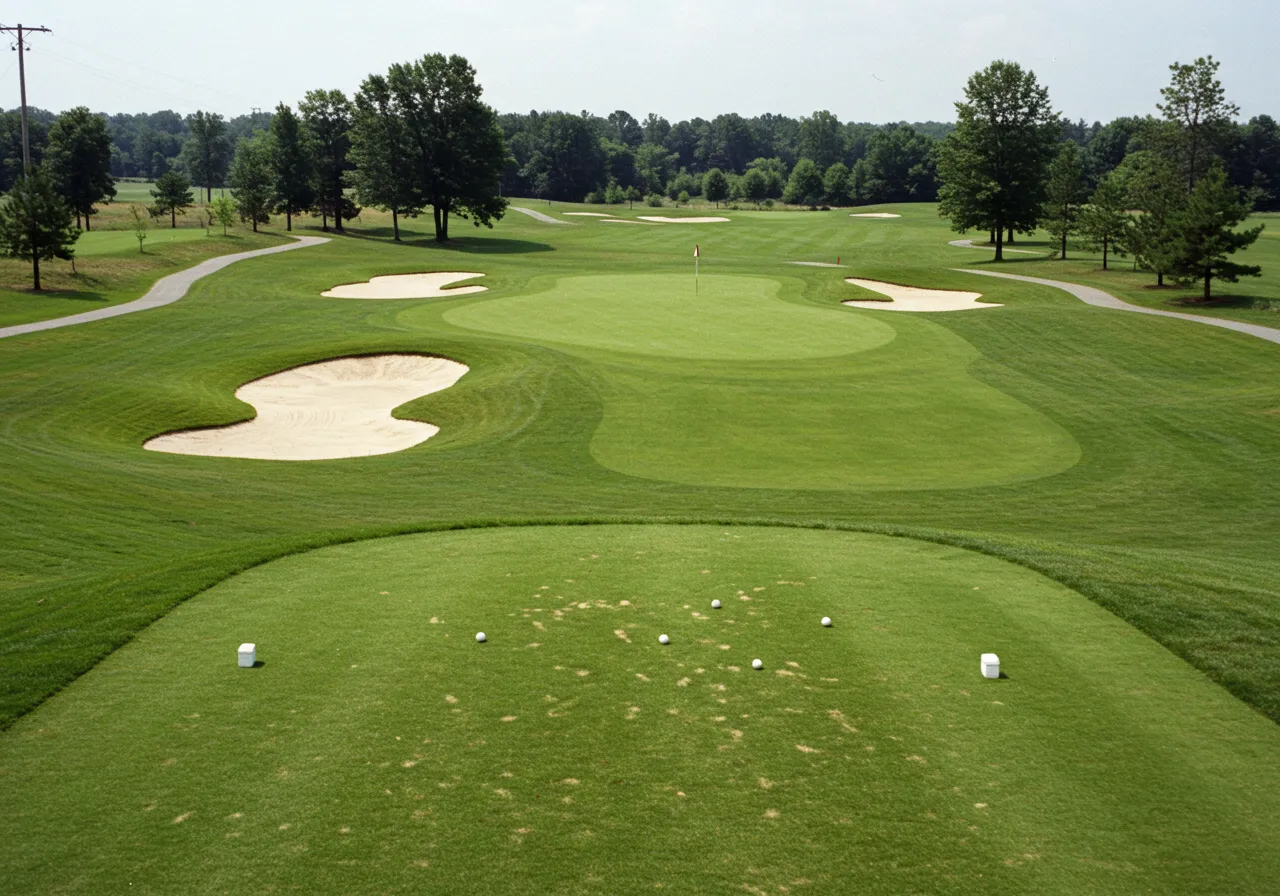
Should Beginners Play Par 72 Courses or Shorter Ones? A Pro’s Advice
In my experience, beginners play better on shorter courses. If you’re new, try an executive golf course with a par between 60 and 68.
These courses are shorter, easier, and faster to finish, making them great for building confidence.
As you get better, you can move up to regulation 18-hole courses with par 70 to 72, like the ones used in PGA Tour events.
These courses are longer and more challenging, but they make more sense once your swing and scoring improve.
Why Your Golf Course Should Match Your Skill Level
Picking the right course helps you enjoy the game and improve faster. If the par is too high or too low for your current skill, you might get frustrated or bored.
Find a course that challenges you, but doesn’t overwhelm you, and your scores will start improving naturally.
FAQs
Are All Golf Courses Made With 18 Holes or Can There Be Less?
Not all golf courses have 18 holes. While 18 holes is the regulation standard used in most tournaments and PGA Tour events, many local courses have 9 holes or even 12 holes.
I’ve played on 9-hole courses that are great for quick practice or beginner rounds. Some golfers even play the 9-hole course twice to make it feel like a full round.
What Is the Par at Augusta National Golf Club?
Augusta National, where the Masters Tournament is played every year, is a par 72 course. It’s about 7,545 yards long.
I’ve played similar courses, and I can tell you, it’s not just the distance, it’s the tough green slopes and tricky pin placements that make it a true challenge for pros.
Do Par 6 Holes Really Exist in Golf?
Yes, par 6 holes are real. I’ve played a few during my travels. One example is Lake Chabot Golf Course in California. It has a 667-yard par 6 that takes real strategy.
While you won’t find par 6 holes in PGA events, there are over 100 courses worldwide that include them, some even have a par 7!
What Is the Most Common Par for an 18-Hole Golf Course?
The most common par for an 18-hole golf course is par 72. About 30% of courses follow that layout.
After that, par 71 is found in about 25% of courses, and par 70 in around 20%. From what I’ve seen, par 72 gives a nice balance of long and short holes that challenge all levels.
What Does “Par 72” Actually Mean in Golf Terms?
When a course is par 72, it means a skilled golfer is expected to finish the course in 72 strokes. That’s usually made up of a mix of four par-3s, ten par-4s, and four par-5s.
It’s the standard setup on most championship courses, and it helps players set a clear scoring target.
What Is the Standard Par for a Golf Course?
The standard par for an 18-hole golf course is 72 strokes. This usually includes a mix of par-3, par-4, and par-5 holes, designed to match the skill level of expert players.
Courses can also be par 70 or par 71, depending on the layout and length.
Is There Any Golf Course That Has a Par 6?
Yes, par 6 holes exist on more than 100 golf courses worldwide, though they’re not common in pro events.
One example is Lake Chabot Golf Course in California, which has a 667-yard par 6 hole. These holes are rare but fun to play on long, open layouts.
Are All Golf Courses Par 80?
No, most golf courses are not par 80. That number is very rare. Standard 18-hole courses are usually par 70 to 72. Even long or difficult courses used in PGA Tour events rarely go above par 73. An par 80 course would need many long holes and is not considered regulation.
Conclusion
As a golfer, your job isn’t just to chase numbers; it’s to understand the course in front of you. Before every round, check the course’s par and slope rating. It gives you a fair benchmark and helps you play with purpose.
If you’re teeing off at a local executive course or testing yourself on a PGA Tour-level track, remember this: par is a guide, not a limit. Use it to grow your game, not to define it.